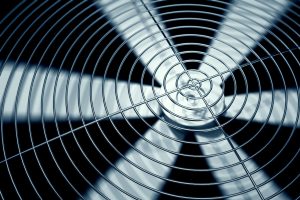 It’s now officially spring, and no matter what cold spells we may encounter in the coming weeks, the move toward warmer weather has started. This is an excellent time of the year to consider options for replacing an old air conditioning system. If your current AC is over 15 years old or has started to show signs of a decline in efficiency, reliability, and/or cooling output, it’s smart to have it retired and replaced with a new unit before the summer heat arrives.
It’s now officially spring, and no matter what cold spells we may encounter in the coming weeks, the move toward warmer weather has started. This is an excellent time of the year to consider options for replacing an old air conditioning system. If your current AC is over 15 years old or has started to show signs of a decline in efficiency, reliability, and/or cooling output, it’s smart to have it retired and replaced with a new unit before the summer heat arrives.
Finding the Right New AC
Shopping for a new air conditioner isn’t like choosing a new car or new furniture. Air conditioning systems must be fit to the needs of a home, and only HVAC professionals can help you pick out the best unit to meet those needs. You’ll need them to install it as well. Our experts are glad to assist you with your search, and help you understand what the different stats on air conditioners mean.
Efficiency Ratings: SEER and EER
Among the stats on an air conditioner, two of the most important are SEER and EER, which are measures of how efficiently a unit operates. What’s the difference between the two, however? Which is more important?
- EER: This stands for energy efficiency ratio. It is the ratio of the amount of cooling the unit outputs (or, strictly speaking, the amount of heat it removes) to the amount of electricity it uses to do the job. The higher the EER number, the more efficient the unit. Measuring the EER of a unit is done under a single set of conditions, usually an outdoor temperature of 95°F and an indoor temperature of 80°F with relative humidity at 50%.
- SEER: This stands for seasonal energy efficiency ratio. The only change here is the addition of the word seasonal. The efficiency rating is exactly the same as EER: amount of cooling to amount of electricity used. However, SEER is measured over an entire cooling season under different conditions, rather than under a single set of conditions for one test. The conditions range from temperatures of 65°F to 104°F and swings in humidity from 30% to 80%.
The short version is the EER is how efficient an AC is under a single standardized test, and SEER is how efficient an AC is overall during a summer. In almost all cases, EER is lower than SEER.
What’s a Good EER and SEER Rating to Look For?
It’s best to go with the standards set by the U.S. Department of Energy’s ENERGY STAR program. To qualify for the ENERGY STAR label, a split system air conditioner must have EER of 12.5 or higher and SEER of 15 or higher. There are systems that score higher than this, but this is an excellent benchmark.
SEER is the more important rating to consider since it gives you an idea of how well the system will perform over a whole season. But don’t dismiss EER, since it provides an idea of how the system works under specific conditions.
To arrange for a great new air conditioning in installation in Evanston, IL, call on our professionals. We’ll help you navigate SEER, EER, and all the other important stats for a new AC.
Malek Heating & Cooling has served the Chicagoland area since 1998.